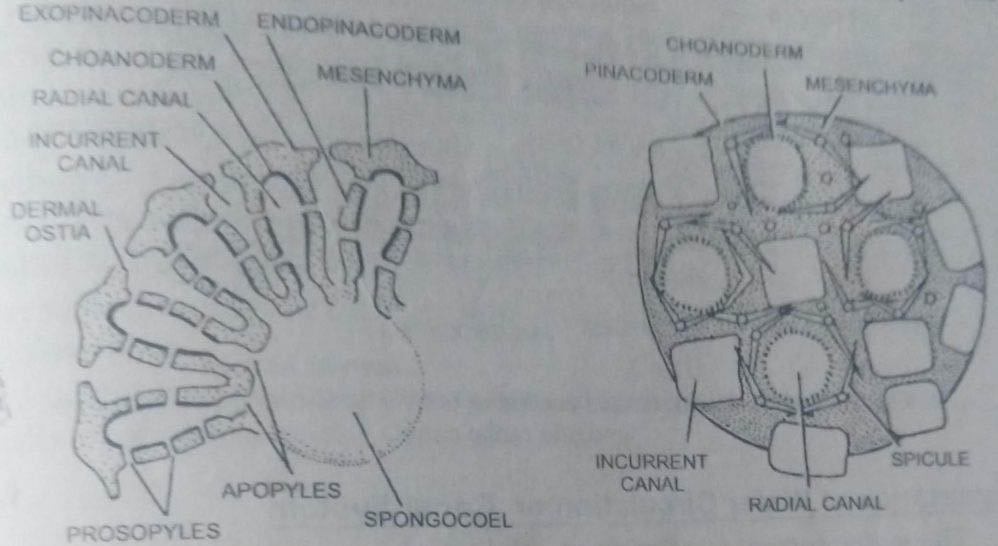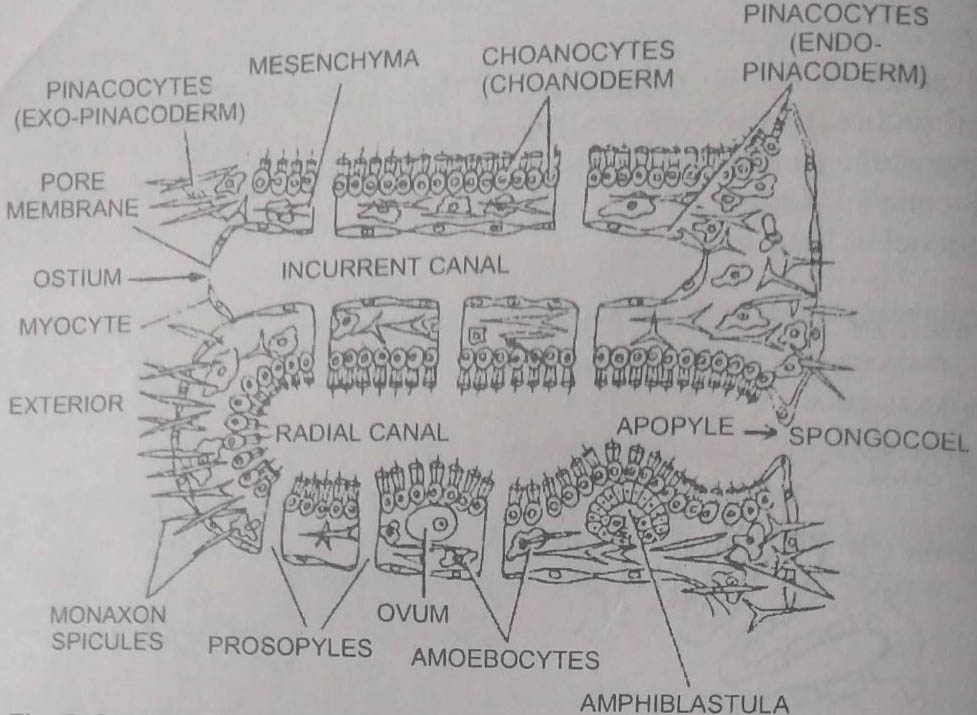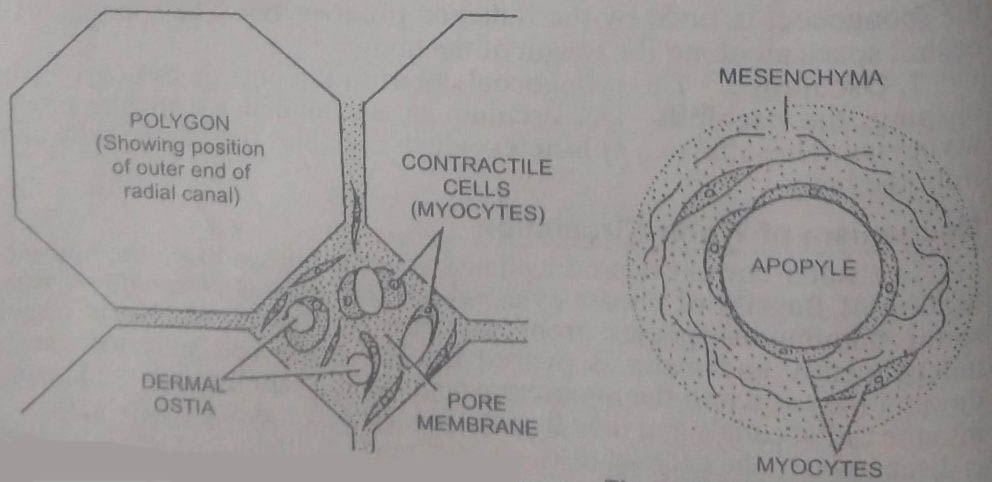Q.2. Describe the canal system of Sycon. State how it is related to the process of nutrition in the sponge.
Or
Explain the physiological importance of the canal system in sponges. Describe the canal system of Sycon.
Ans.2. Canal System
The body wall of sponges is folded to produce a complex system of pores and canals for the entrance of water current. Depending upon the arrangement of these canals in sponges, the canal system is of many types. Scypha (Sycon) represents Sycon type of canal system. Its various components are as follows:
1. Ostia or dermal pores: The external grooves of body surface is covered by a thin pore membrane. It bears two or more openings, the ostia or the dermal pores. These pores are surrounded by contractile myocytes. These can reduce the diameter of dermal pores and thus regulate the amount of incoming water. These open into the incurrent canals.

2. Incurrent canals: These are narrow space placed radially between adjacent radial canals and resemble them in shape and size. These are lined with pinacocytes. These open to the outside through ostia but are blind at their inner ends.
3. Prosopyles : Incurrent canals communicate with radial canals through prosopyles. Each prosopyle is a perforation in a single tubular cell, the porocyte.
4. Radial or flagellated canals: The body wall of Scypha invaginates to form thimble-shaped chambers. These chambers are lined by flagellated choanocytes and are called flagellated chambers or radial canals. The radial canals and the incurrent canals lie parallel and alternate to each other being separated by the mesenchyme.

They are arranged in such a way that in vertical section of the body wall, each radial canal appears to be surrounded by four incurrent canals and likewise each incurrent canal is surrounded by four canals. Radial canals end blindly at their outer ends but open into spongocoel at their inner ends.
6. Spongocoel: It is the large central cavity into which the radial canals open through their apopyles. In Leucosolenia, the spongocoel is lined by flagellated choanocytes. In Scypha, the choanocytes line the radial canals and the spongocoel is lined by the flattened pinacocytes. The spongocoel is the central space all along the length of the body.
7. Osculum: The spongocoel opens to the outside through a terminal opening, the osculum. The osculum is surrounded by special contractile myocytes. These form a sphincter which regulates the rate of flow of water from the body.
Mechanism of Water Circulation
The water current is produced and water is pumped into the body by the beating of flagella of choanocytes which line the radial canals. A wave of spiral undulations passes from the base to the tip of each flagellum independently and water is pushed in. The water current enters the body through the ostia into the incurrent canals, from there through the prosopyles into the radial canals and then through apopyles it reaches the spongocoel and is discharged to the exterior through osculum. The path of water current can be represented as follows:
Exterior → (dermal ostium) → Incurrent canal → (Prosopyle) →
Radial canal → (apopyle) → Excurrent canal → (gastric ostium)
Paragastric cavity → (osculum) → Exterior

Importance of Water Circulation or Canal System
The water current is of great physiological importance because it serves the following purposes :
(a) Nutrition : It brings food in.
(b) Respiration : The water entering the body is rich in oxygen and facilitates exchange of gases.

(c) Excretion : While leaving the body, the water current removes CO2 and nitrogenous products.
(d) Reproduction: The spermatozoa enter the body of other sponges along with the water current.
BSc 1st Year Lower Non-chordates Sycon Sample Model Practice Question Answer Papers